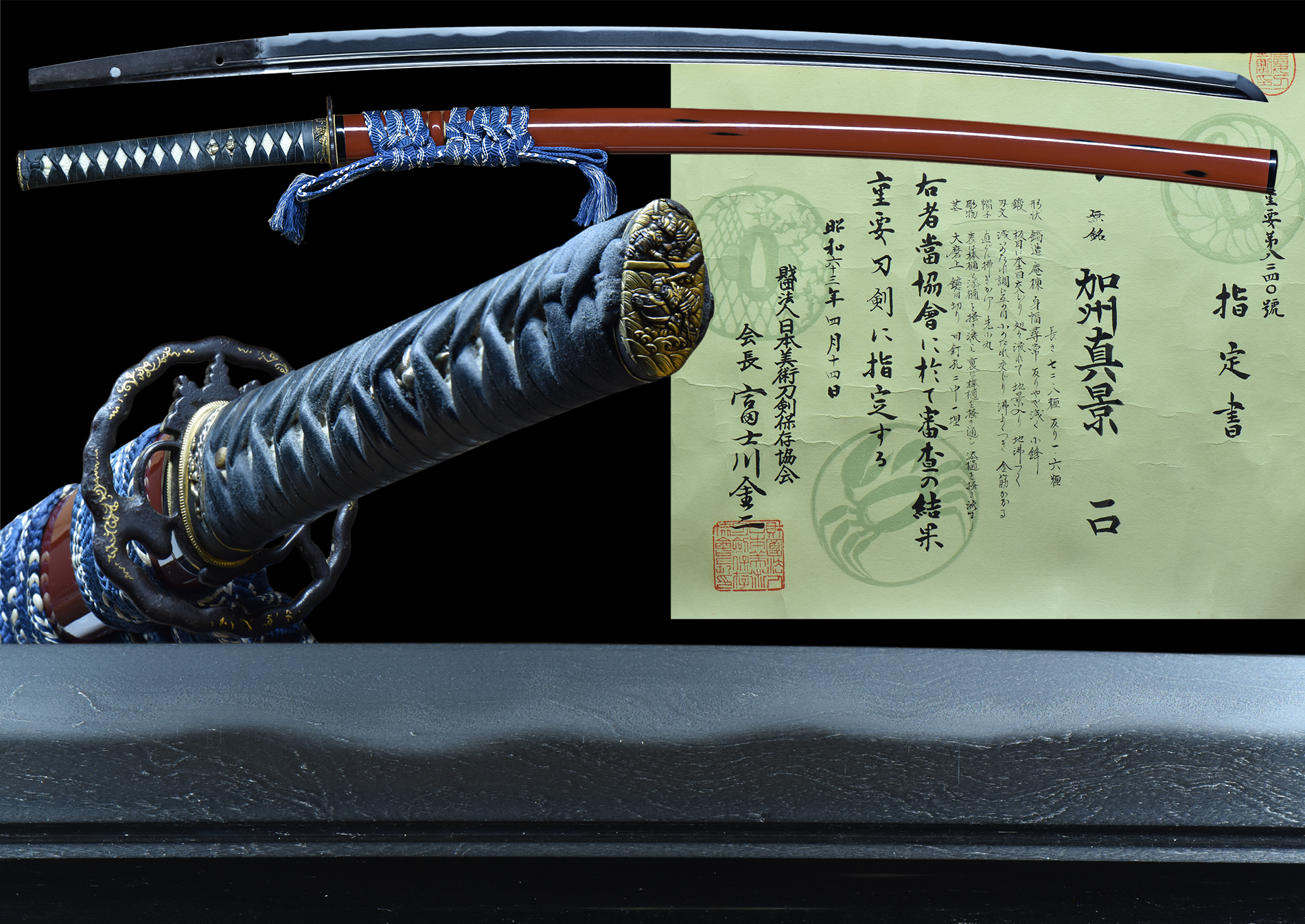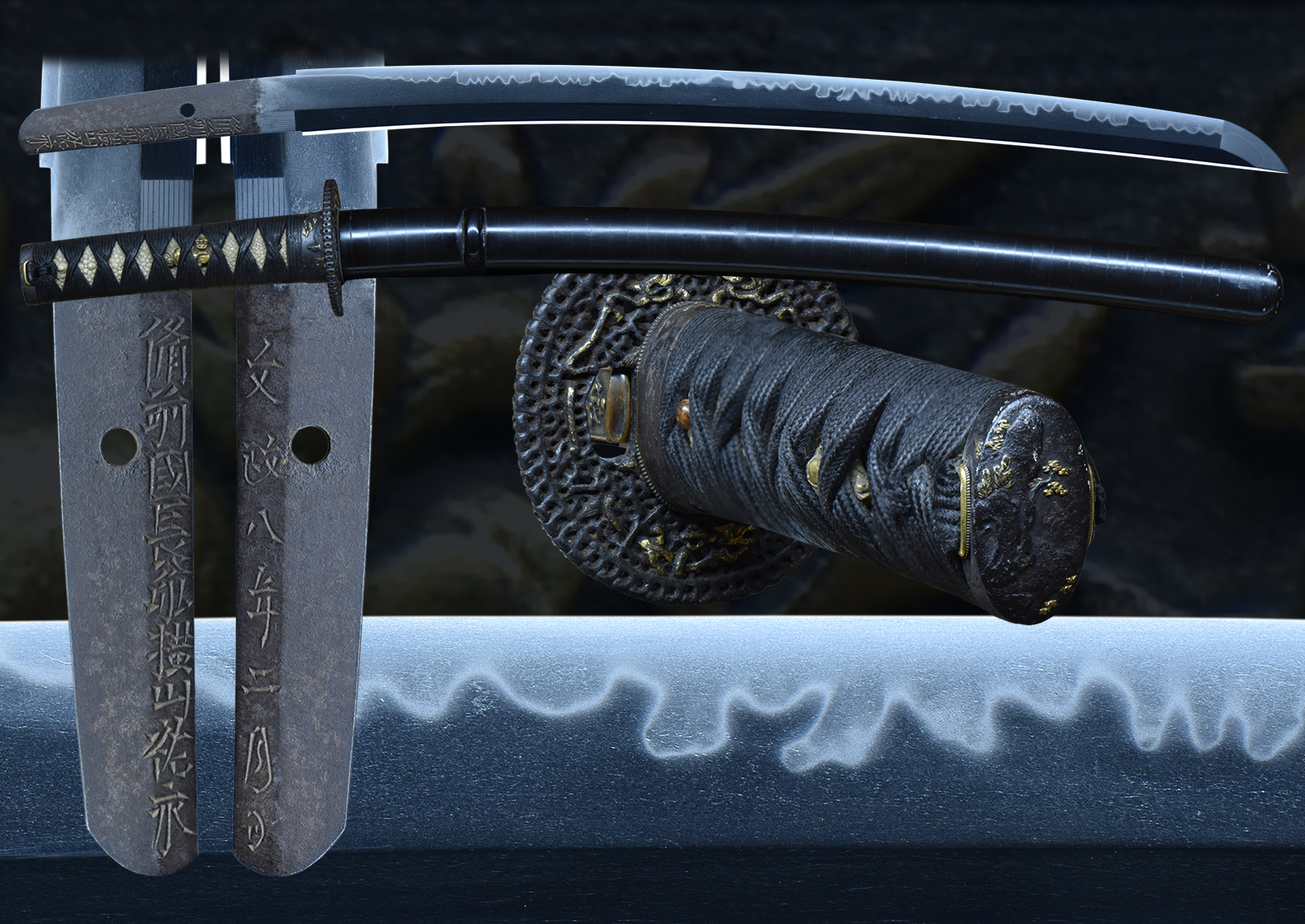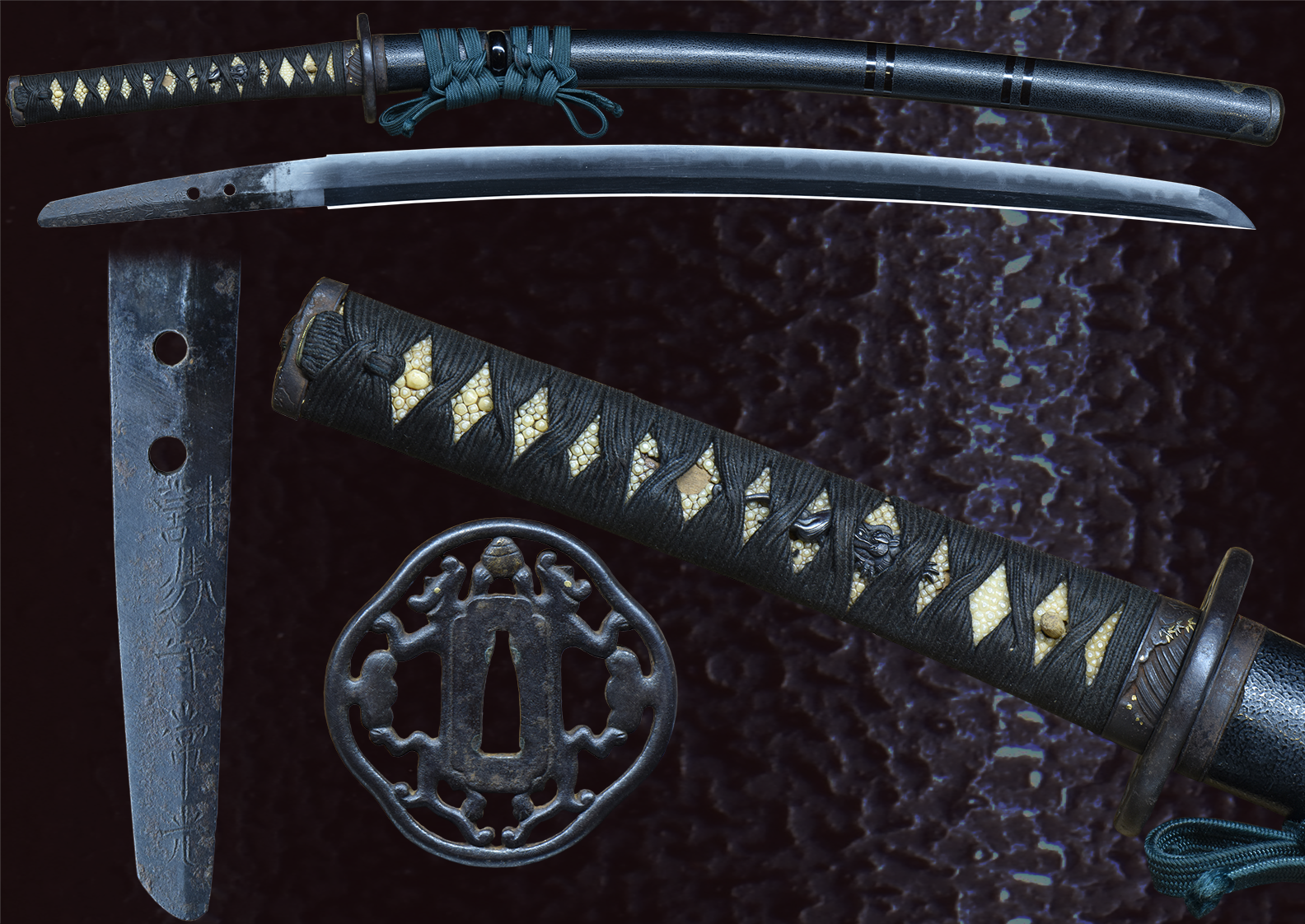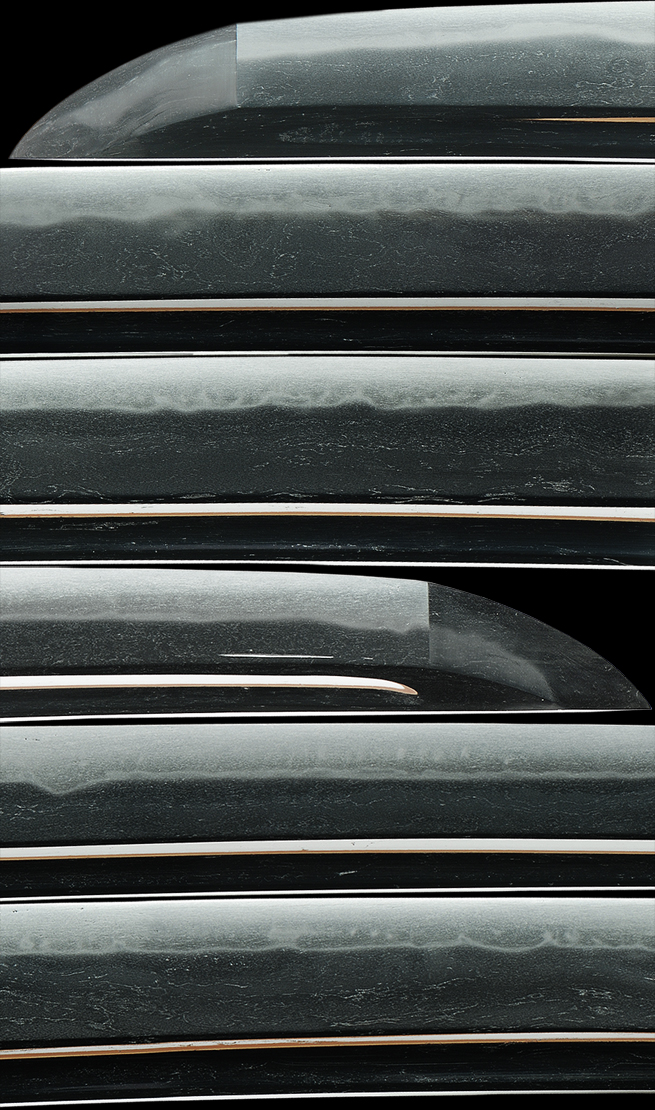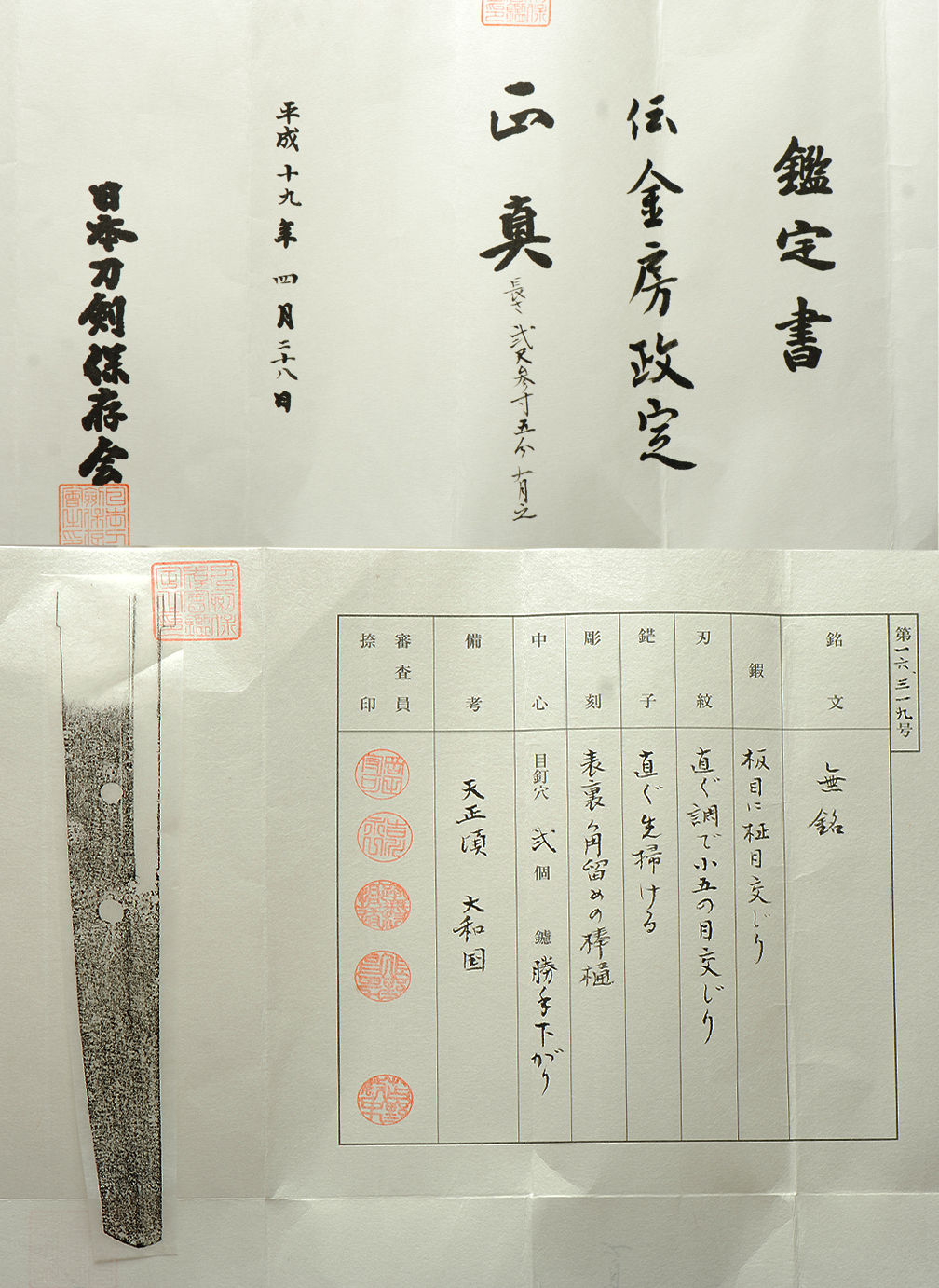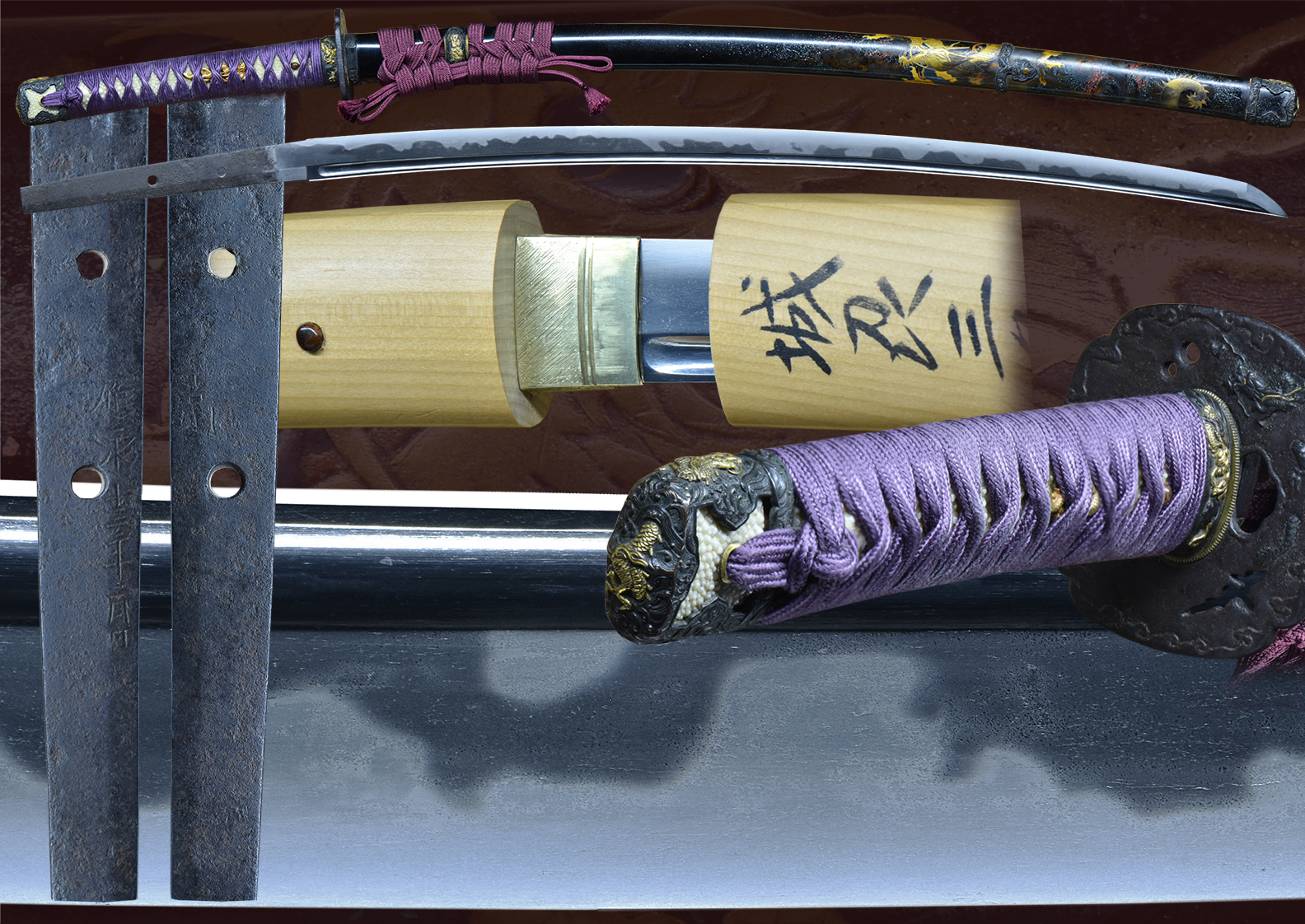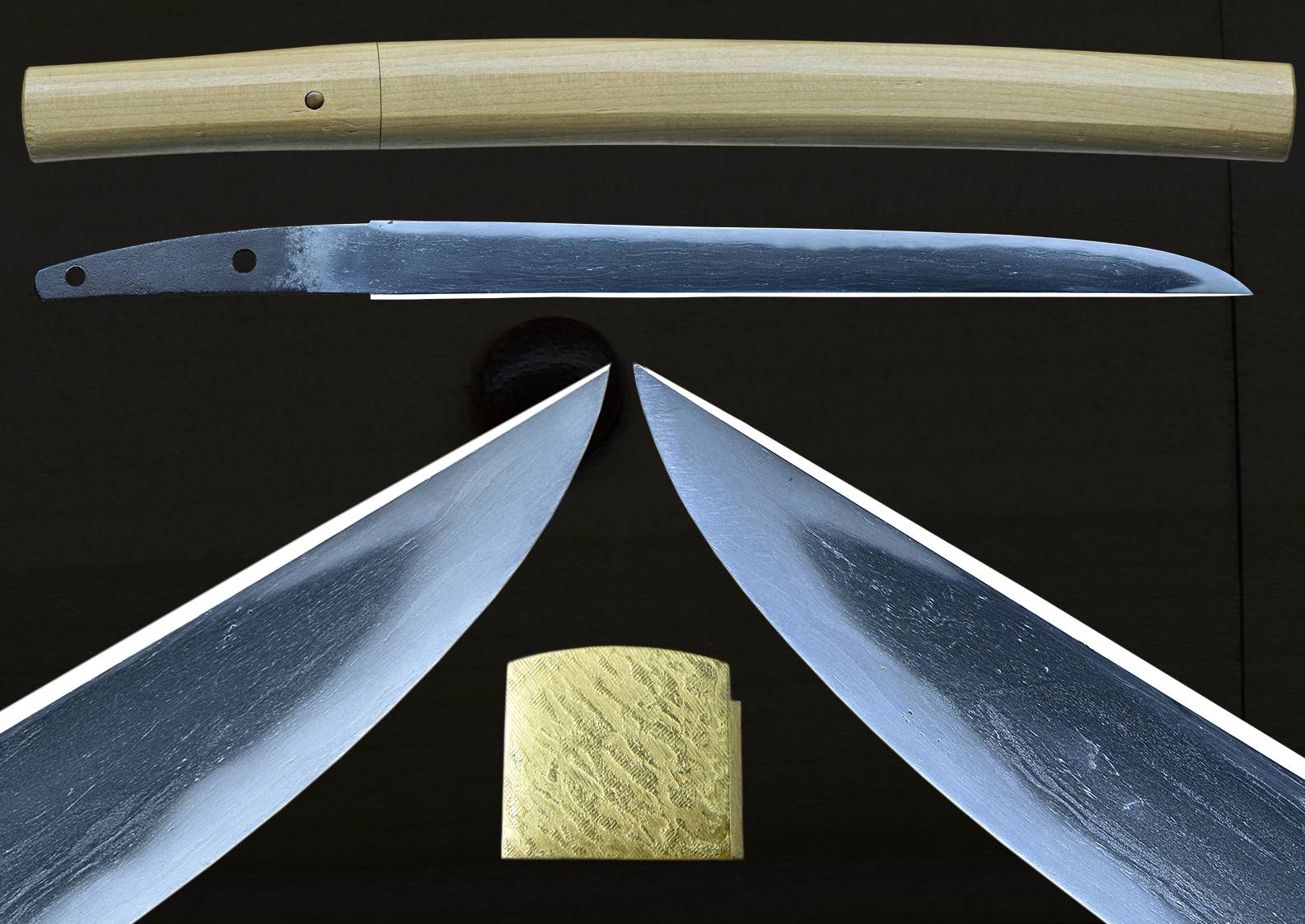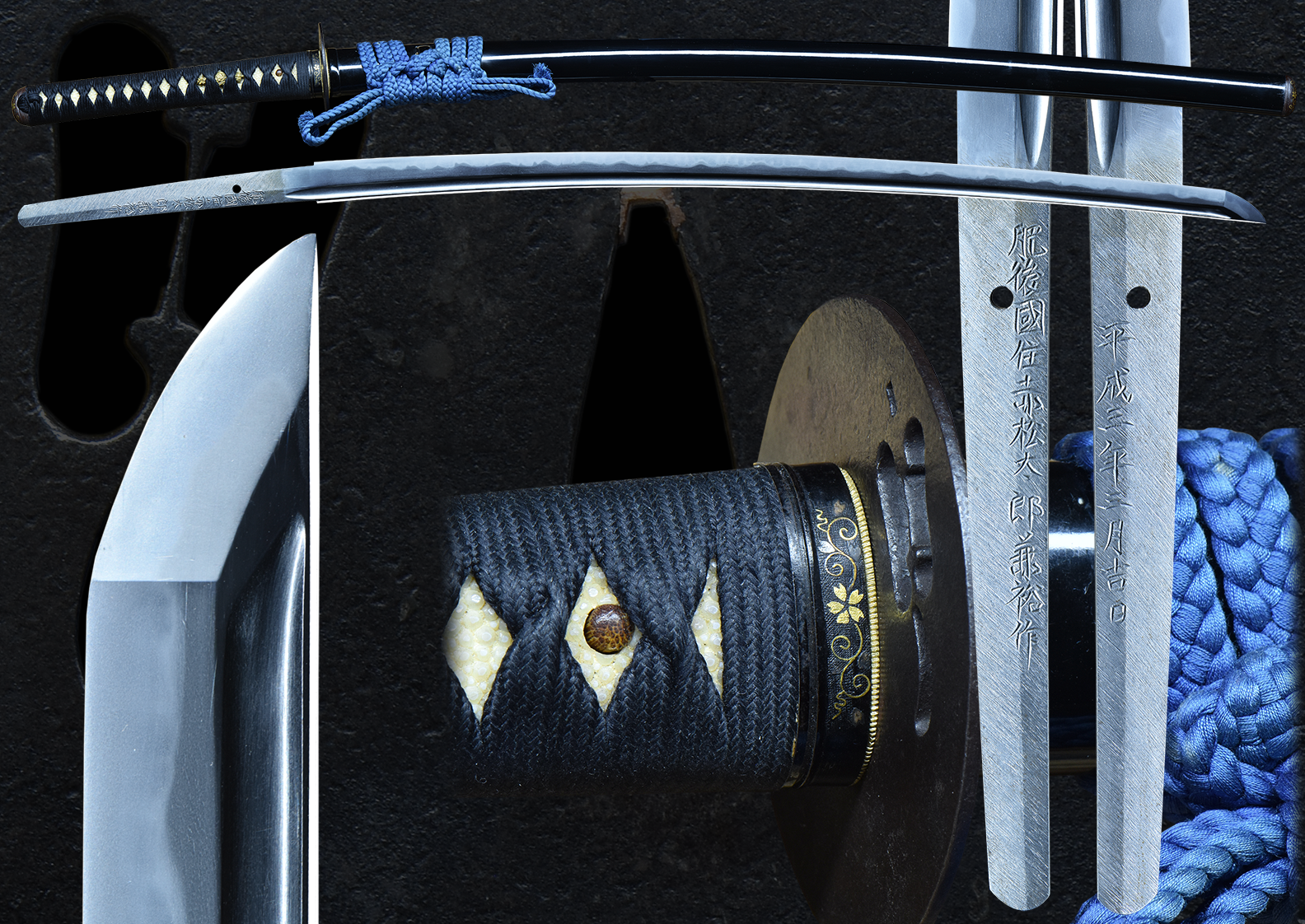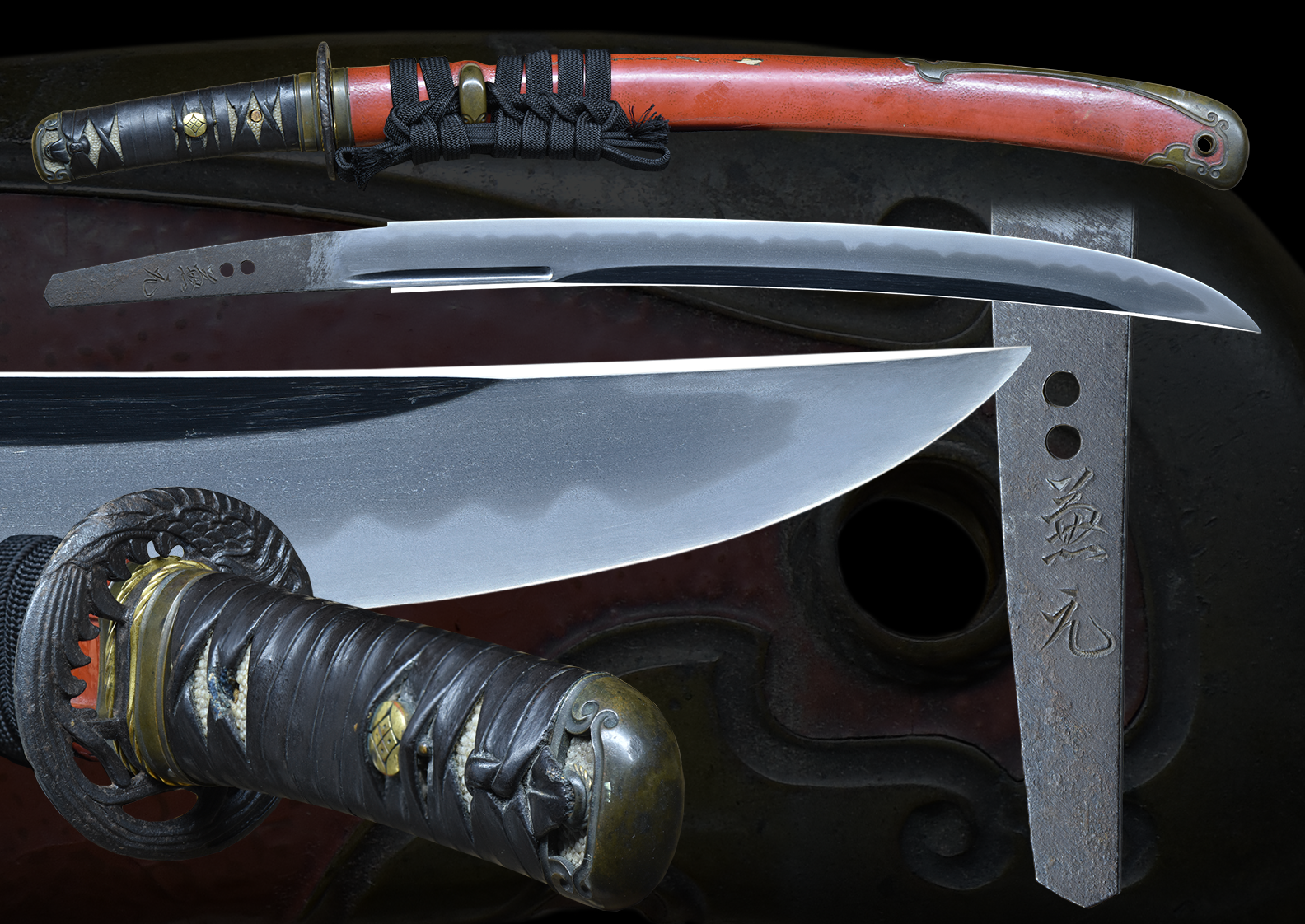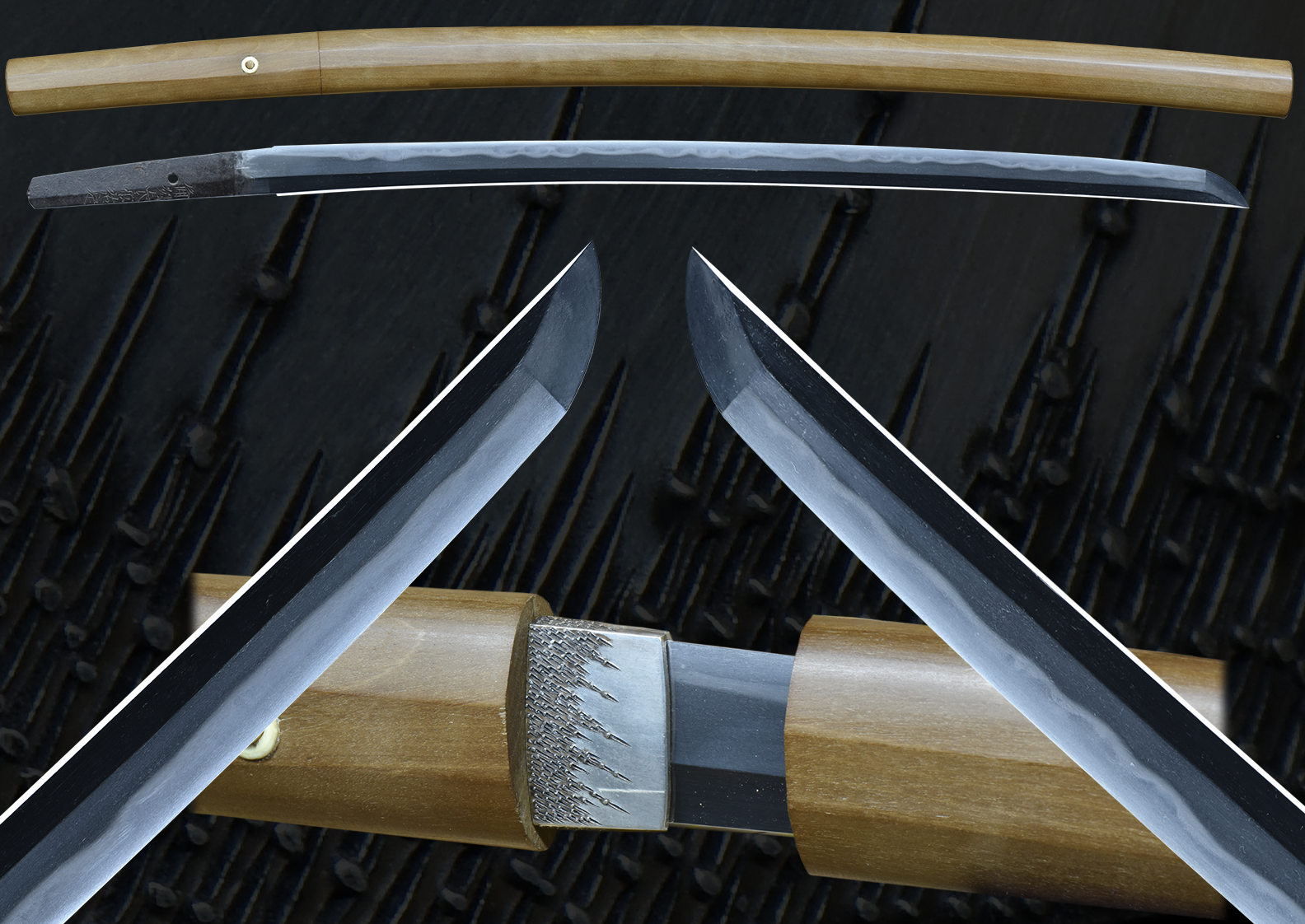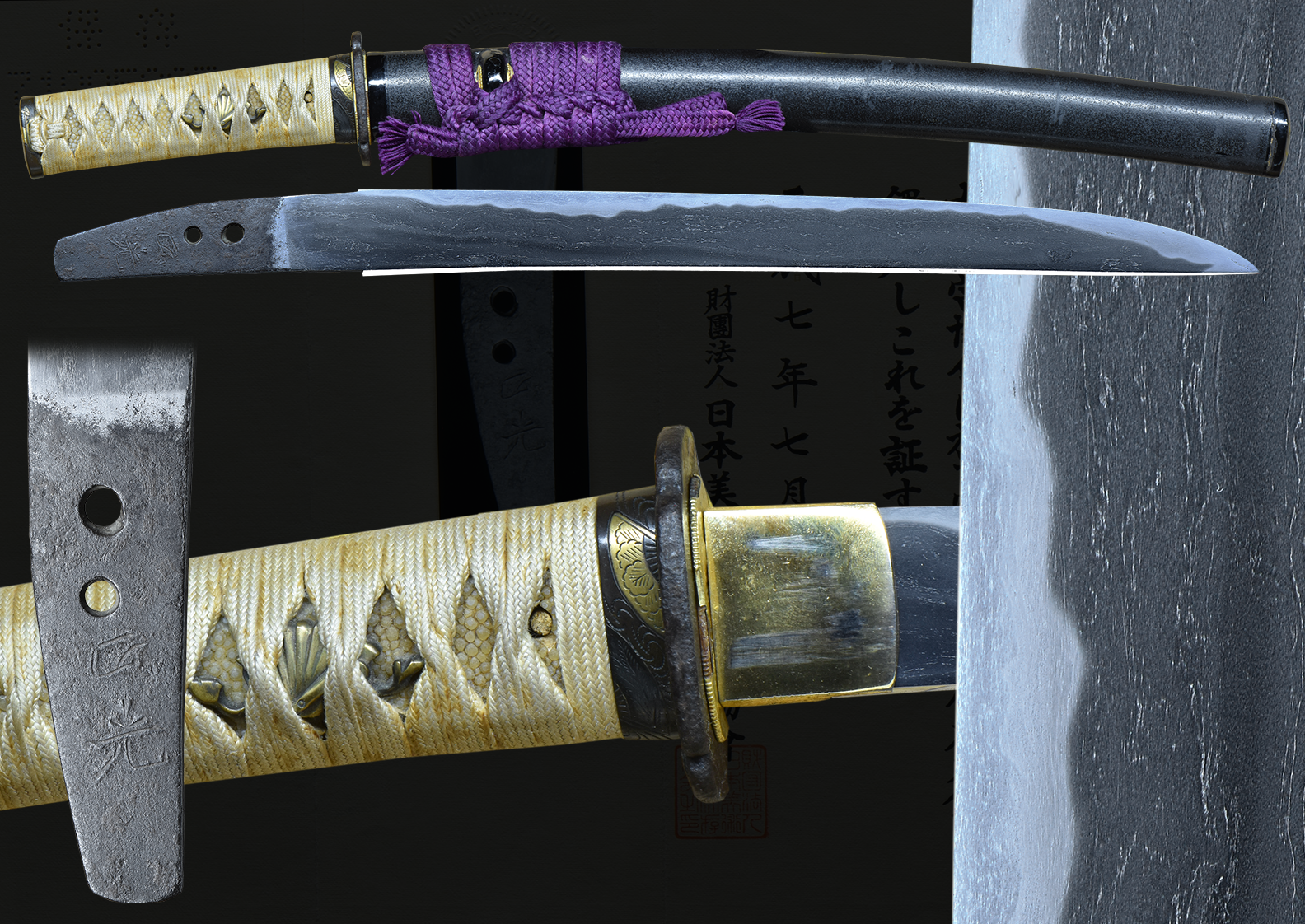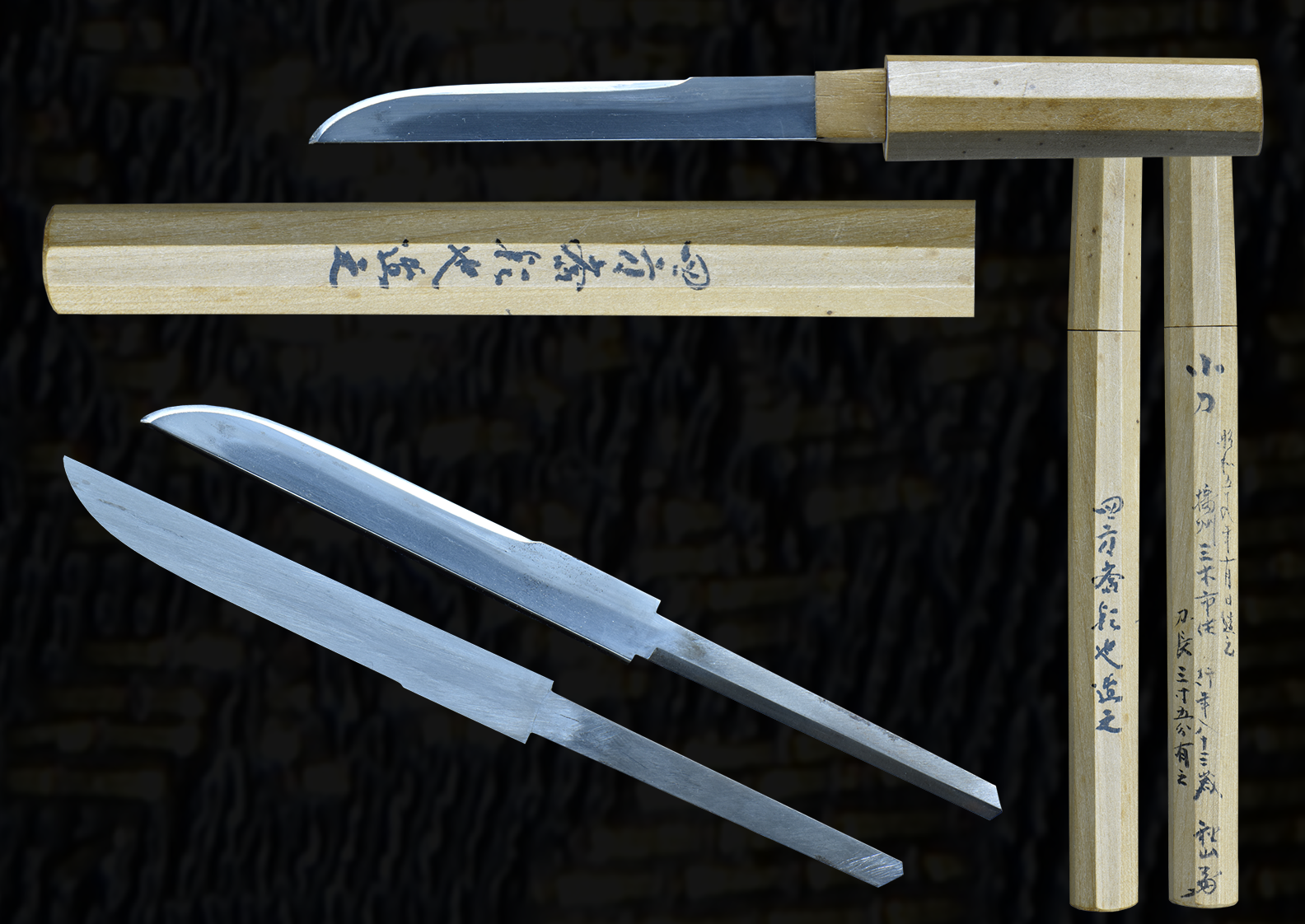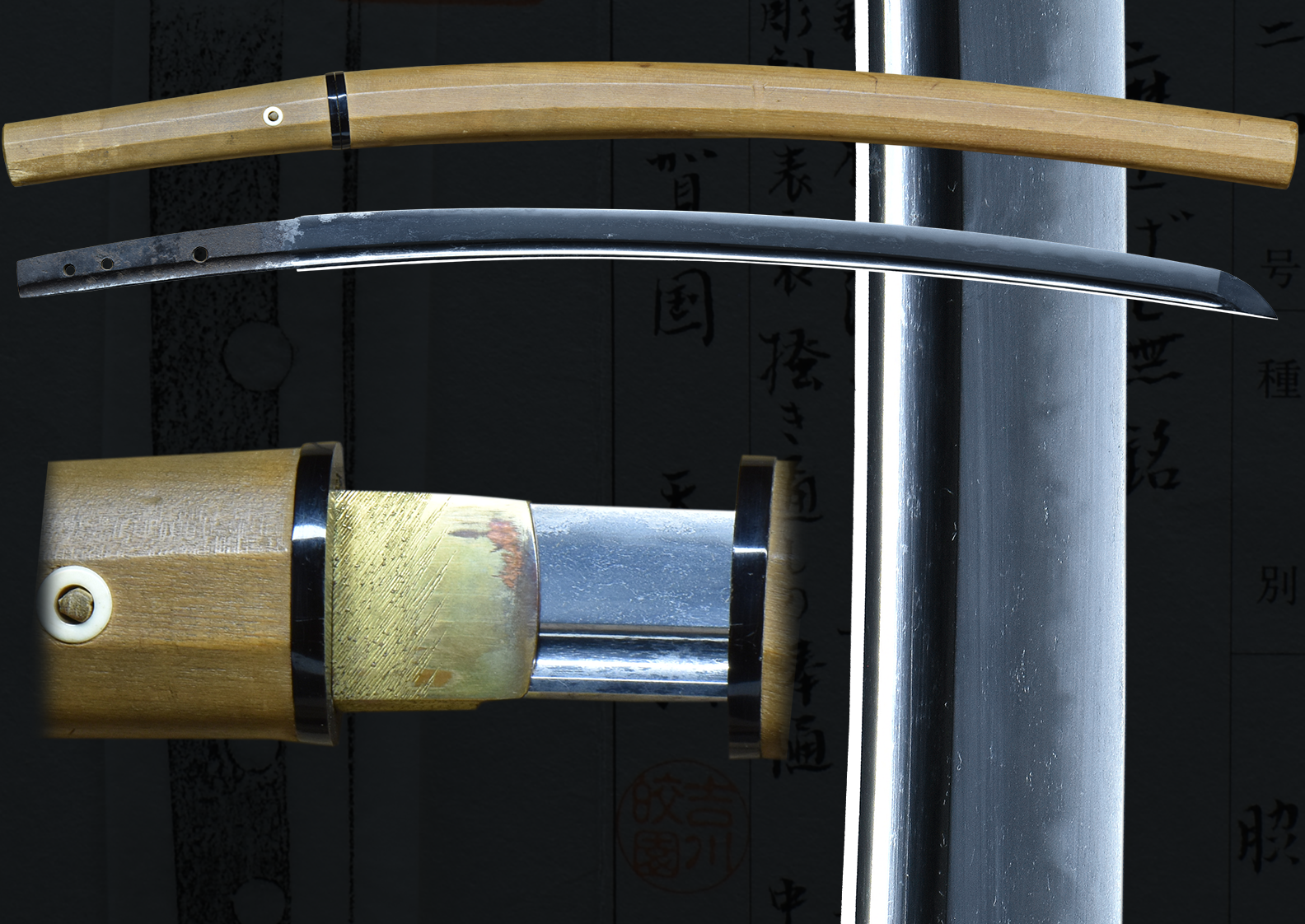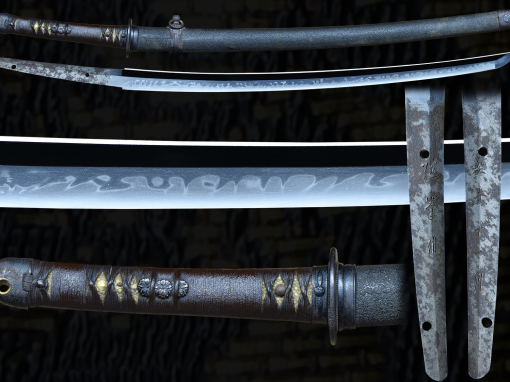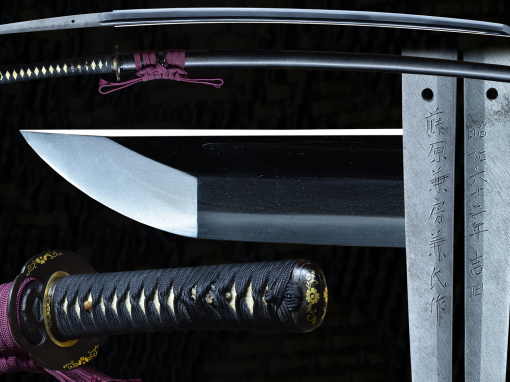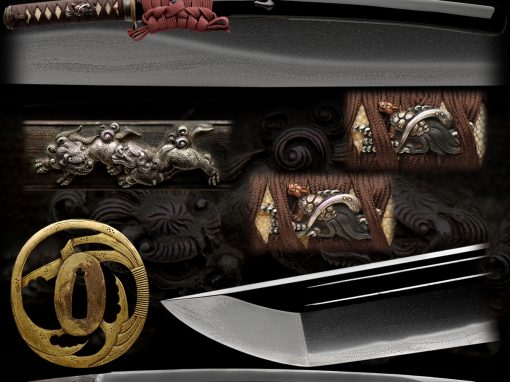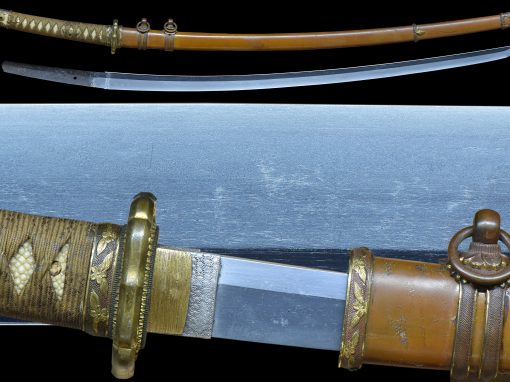A beautiful mounted koto katana in the Yamato tradition. This blade was attributed to the Kanabo school and is stunning. The blade has bohi and the remnants of a soe hi also on one side. This blade is inundated with hataraki. There are many ashi and yo up and down the blade Based in sugu-ha midare with much choji/gunome within. The hada is an itame nagare with utsuri to be found.
About the smith:
The meikan list one earlier Masasada (see info below) of whom it seems more blades are going round. Also possible that these were the same guy but who just got listed twice.MASASADA (政定), Tenshō (天正, 1573-1592), Yamato – “Kanabō Saemon no Jō Masasada” (金房左衛門尉政定), Kanabō school.
MASASADA (政定), Eiroku (永禄, 1558-1570), Yamato – “Yamato no Kuni Fujiwara Masasada” (大和国藤原政定), “Nanto-jū Fujiwara Ason Kanabō Saemon no Jō Masasada saku” (南都住藤原朝臣金房左衛門尉政定作), Kanabō school (金房), ko-itame mixed with masame and ji-nie, the hamon is a suguha or gunome-midare in ko-nie-deki, wazamono
The mounts are ensuite with a dragon theme from tsuba to menuki. The Tsuka-ito and sageo are blue with a stunning red ishime style lacquer finished saya. An attractive koshirae this intricately mounted sword is all of dragons, finished in a red lacquer. This is a rare and exciting mounting for a unique blade. This blade is to be enjoyed for its fine activity and rarity as they are seldom found in such good condition.
The legend of the Dragon:
Many Chinese believed the dragon held, or at least chased, the sun, and many drawings depict this as a flaming red ball. However, over the years, this sun changed color from red to a silvery-pearl color, and gradually the ball came to be considered a flaming pearl, known as the night shining pearl. It is with this that the dragon is almost invariably associated in art.
The link between serpentine shaped dragons and the pearl is reflected in a legend that states that Chi Liang, the Marquis of Sui, who was a Minister of State, was out walking one day, and found a wounded snake to which he gave medicine and saved its life. Sometime later, he saw the snake with a brilliant pearl in its mouth. The snake said ‘I am the son of His Majesty the Dragon, and I am indebted to you for the preservation of my life, and I have brought this pearl to thank you for your kindness.’ The Minister accepted the pearl and, being a dutiful subject, presented it to his sovereign, who placed it in his hall.
- Mei: Mumei
- Date: Koto (1500’s)
- Nagasa: 27-7/8 inches
- Sori: 24.0 mm
- Width at the ha-machi: 29.9 mm
- Width at the yokote: 19.6 mm
- Thickness at the mune-machi: 7.0 mm
- Construction: Shinogi zukuri
- Mune: Iori
- Nakago: Ubu
- Kitae: Itame/mokume
- Hamon: Midare Gunome
- Boshi: Maru
- Condition: Good polish
(shipping and insurance included)
Email us if your interested in this item and remember to include the order number for this item: fss-748.
Click to Enlarge Image
Click to Enlarge Image
kantei-sho (鑑定書) – Appraisal
Den Kanabô Masasada (伝金房政定)
shôshin (正真) – Authentic
nagasa 2 shaku 3 sun 5 bu kore ari (長さ弐尺参寸五分有之) – Blade length ~ 71.2 cm
Heisei 19 nen 4 gatsu 28 nichi (平成十九年四月二十八日) – April 28th 2007
Nihon Tôken Hozon Kai (日本刀剣保存会) – NTHK
No 16,319
meibun (銘文) – Signature: mumei
kitae (鍛) – Forging: itame mixed with masame
hamon (刃紋) – Hardening: sugu-chô mixed with ko-gunome
bôshi (鋩子) – Hardening in tip: sugu with hakikake at the tip
chôkoku (彫刻) – Engravings: on both sides a bôhi that ends in kakudome
nakago (中心) – Tang: mekugi-ana (目釘穴) 2, yasurime (鑢): katte-sagari
bikô (備考) – Remarks: around Tenshô (天正, 1573-1592), Yamato province
shinsa’in natsu’in (審査員捺印) – Seals of Judges: 5 seals
Subscribe for the Latest Updates!
Join our mailing list to receive the latest News & Updates from Nihonto Antiques.
You have Successfully Subscribed!
For Sale
